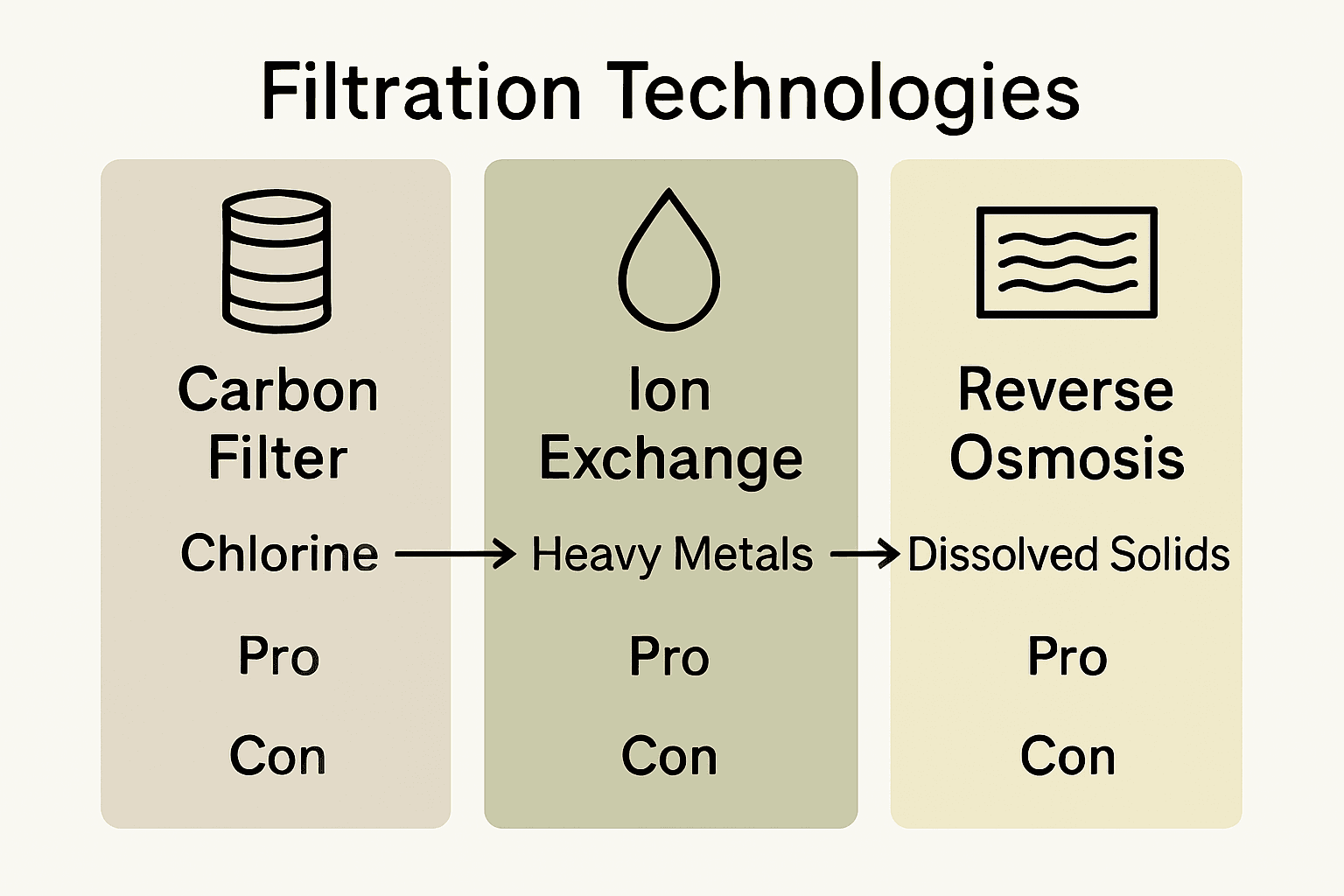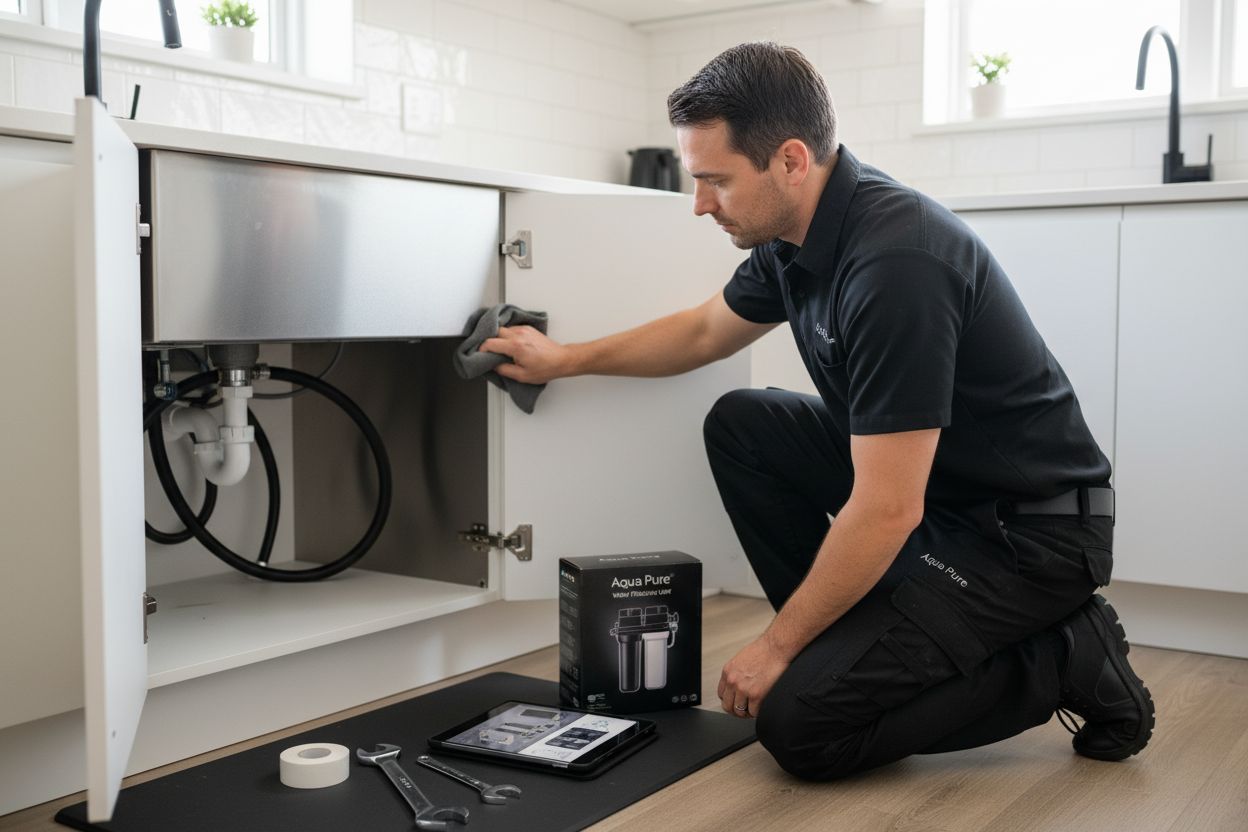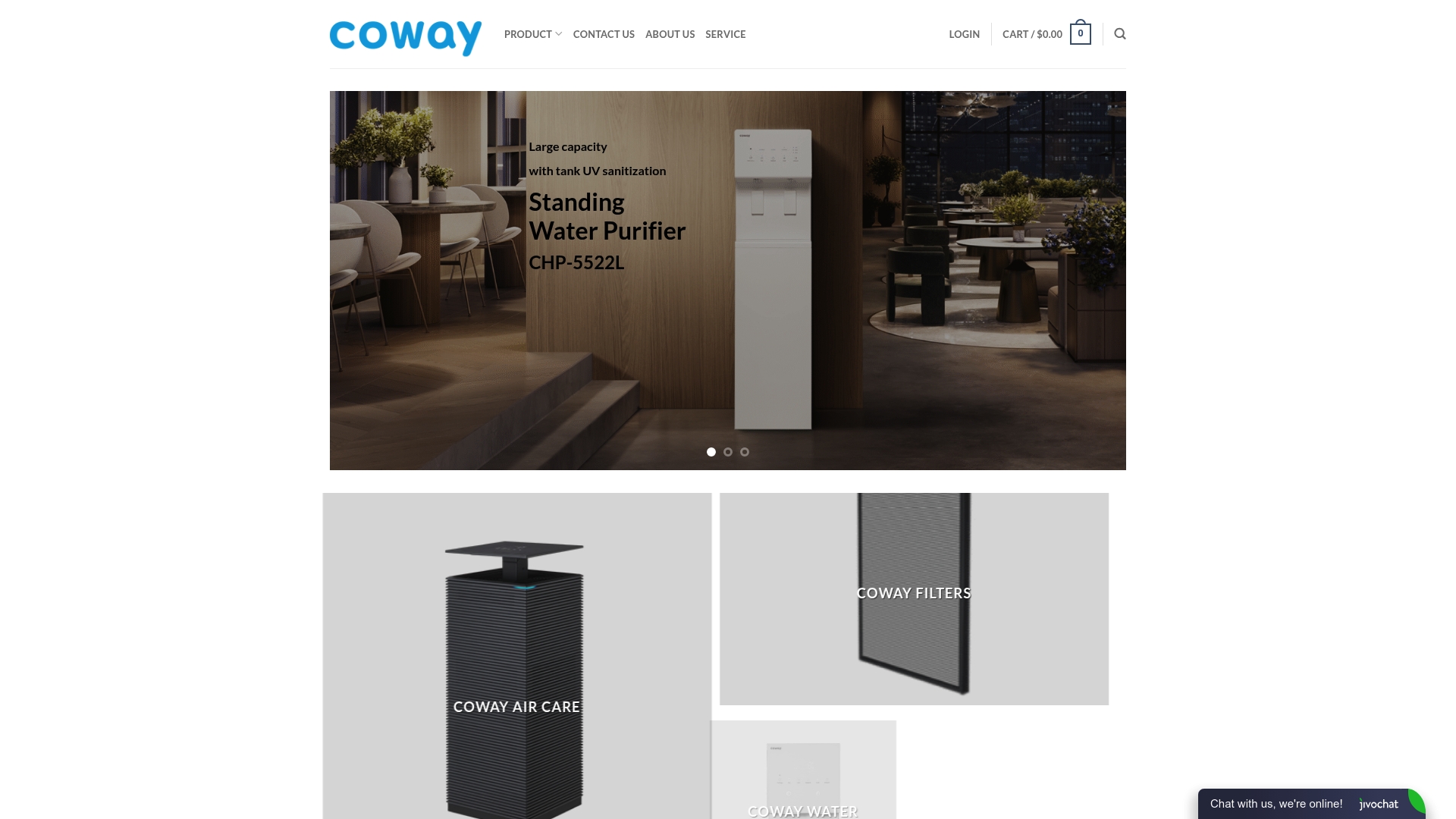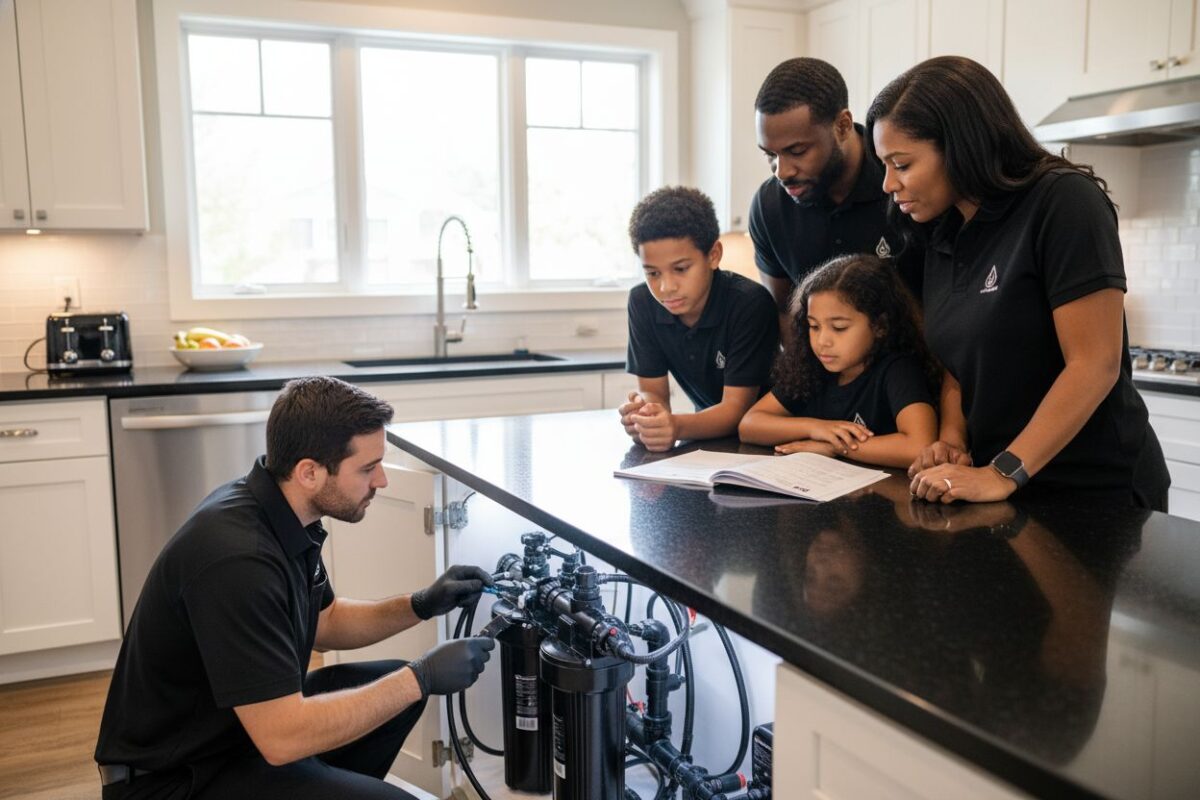Uncategorized
Advanced Water Filtration Guide for Healthier Homes
Did you know that nearly one in four Americans drink water from sources that do not meet government safety standards? Clean water shapes your wellbeing every day, yet hidden contaminants may flow from your tap. Discover straightforward steps to assess, select, and maintain the right water filtration system for lasting peace of mind and healthier living at home.
Quick Summary
| Key Point | Explanation |
|---|---|
| 1. Obtain a comprehensive water analysis. | Conduct a professional water test or use an EPA-approved kit to identify specific contaminants in your water supply. |
| 2. Select a filtration system that addresses multiple contaminants. | Choose technology like carbon filters or reverse osmosis that effectively targets various pollutants for better water quality. |
| 3. Ensure proper preparation before installation. | Clear the install area, gather all tools, and check plumbing compatibility to avoid complications during setup. |
| 4. Regularly test water quality post-installation. | Utilize home testing kits periodically to check for any changes in contaminants and confirm the system’s effectiveness. |
| 5. Maintain your filtration system consistently. | Schedule routine checks and replacements to ensure optimal performance and longevity of your water filtration system. |
Table of Contents
- Step 1: Assess Water Quality And Filtration Needs
- Step 2: Select The Ideal Advanced Filtration System
- Step 3: Prepare The Installation Area And Components
- Step 4: Install And Configure The Filtration Unit
- Step 5: Test Water Quality And System Performance
- Step 6: Maintain And Upgrade Filtration Regularly
Step 1: Assess Water Quality and Filtration Needs
Knowing exactly what’s in your home’s water is the first critical step toward selecting the right filtration solution. This section will walk you through understanding your water’s unique characteristics and determining which filtration approach makes the most sense for your household.
Start by getting a comprehensive water analysis. Our complete water filtration process guide recommends obtaining a professional water quality test or using an EPA approved home testing kit. According to the EPA, identifying specific contaminants helps homeowners make precise filtration decisions.
Your local water utility provides annual water quality reports that reveal crucial details about potential pollutants. As recommended by Green America, leverage resources like the Environmental Working Group’s Tap Water Database to gain deeper insights into your specific water profile. These databases offer granular information about potential lead levels, chemical contaminants, and mineral compositions unique to your region.
Pro Tip: Request a detailed water quality report from your local utility and compare it against national safety standards.
Once you understand your water’s composition, match potential contaminants with appropriate filtration technologies. Different filtration systems target specific pollutants like heavy metals, chlorine, microorganisms, or industrial chemicals. Some households might need multi stage filtration while others require more targeted solutions.
Quick warning: Don’t assume all water filters work identically. Each system has unique strengths and limitations in removing specific contaminants. Matching your exact water profile with the right filtration approach is crucial for ensuring safe drinking water.
Ready to take the next step? Our upcoming section will guide you through selecting the perfect water filtration system tailored to your household’s specific needs.
Step 2: Select the Ideal Advanced Filtration System
Now that you understand your water’s unique composition, it is time to choose a filtration system that precisely matches your household’s needs. This section will help you navigate the world of advanced water filtration technologies and select the most effective solution.
Understanding filtration technology starts with knowing your options. According to Green America, three primary filtration technologies dominate the market: carbon filters, ion exchange softeners, and reverse osmosis systems. Each technology offers unique strengths in removing specific contaminants.
Carbon filters excel at removing chlorine, sediment, and organic compounds that impact taste and odor. Ion exchange softeners specialize in reducing mineral content that causes hard water. Reverse osmosis systems provide comprehensive filtration removing up to 99% of dissolved solids, including heavy metals and potentially harmful microorganisms.
The EPA recommends considering point of use and point of entry treatment options. Point of use systems filter water at specific outlets like kitchen sinks, while point of entry systems treat water as it enters your home. Your choice depends on your water quality assessment and specific household requirements.
Here’s a comparison of common filtration technologies:
| Technology | Main Contaminants Removed | Strengths | Limitations |
|---|---|---|---|
| Carbon Filters | Chlorine Sediment Organic compounds |
Improves taste and odor Easy installation |
Limited for heavy metals |
| Ion Exchange Softeners | Calcium Magnesium |
Reduces hard water Protects plumbing |
Does not remove microorganisms |
| Reverse Osmosis Systems | Heavy metals Dissolved solids Microorganisms |
Comprehensive filtering Removes up to 99% of contaminants |
Slower flow More maintenance |
| Multi Stage Systems | Multiple contaminants | Broad protection Customizable layers |
Higher cost More complex setup |
Pro Tip: Select a filtration system that addresses multiple contaminants rather than focusing on a single pollutant.

Consider factors like maintenance requirements, filter replacement costs, water pressure impact, and installation complexity. Some advanced systems combine multiple filtration technologies for comprehensive water treatment. Look for systems certified by recognized standards organizations to ensure performance and safety.
Quick warning: More expensive does not always mean better. Match the filtration technology to your specific water quality profile for the most effective and efficient solution.
Ready for the next step? Our upcoming section will walk you through proper installation and maintenance of your selected water filtration system.
Step 3: Prepare the Installation Area and Components
Before diving into water filter installation, proper preparation can save you time, frustration, and potential complications. This section will guide you through systematically preparing your installation area and gathering necessary components for a smooth setup.
7 Essential Types of Water Filters recommend starting with a comprehensive workspace assessment. According to EPA guidelines, reviewing manufacturer instructions is crucial before beginning any installation process. Clear the area around your chosen installation location completely and ensure you have adequate lighting and workspace.
Gather all necessary tools beforehand. Typical installation requires an adjustable wrench, plumber’s tape, a bucket for potential water drainage, and protective gloves. Measure the designated installation space precisely to confirm your selected filtration system will fit comfortably and allow easy access for future maintenance.
The EPA emphasizes checking your water system’s compatibility. Inspect existing plumbing connections and water pressure levels. Some filtration systems require specific water pressure ranges to function optimally. If you are uncertain about your home’s current water pressure, consider purchasing an inexpensive pressure gauge to confirm compatibility.
Pro Tip: Take photographs of your current plumbing configuration before starting installation to help with reference and potential troubleshooting.
Organize all filtration system components systematically. Unpack everything carefully and cross reference against the manufacturer’s parts list. Confirm no pieces are missing and that all components appear undamaged. Read through the entire installation manual once before beginning to understand the full process.
Quick warning: Rushing through preparation can lead to costly mistakes. Take your time and ensure everything is ready before starting the actual installation.

Ready for the next step? Our upcoming section will walk you through the actual installation process with detailed step by step instructions.
Step 4: Install and Configure the Filtration Unit
With your workspace prepared and components organized, you are now ready to transform your water filtration vision into reality. This section will walk you through the critical steps of installing and configuring your advanced water filtration system with precision and care.
Setting Up Under Sink Filters provides essential guidance for successful installation. According to EPA guidelines, carefully following manufacturer instructions is paramount. Start by shutting off the main water supply to prevent unexpected water flow and potential complications.
Begin with mounting brackets or designated support structures for your filtration unit. Ensure they are securely anchored and level. Pay close attention to the manufacturer’s specific mounting requirements. Some systems need additional reinforcement or specific positioning to function optimally.
The EPA recommends methodical connection of water input and output lines. Use plumber’s tape on threaded connections to prevent potential leaks. Connect each component systematically and double check that all fittings are tight but not over tightened. Gentle and precise connections prevent future maintenance issues.
Pro Tip: Work slowly and systematically. Rushing through connections can lead to potential leaks or improper filtration.
Once physical installation is complete, gradually restore water pressure. Open the main water supply valve slowly and check for any immediate leaks or unusual water behavior. Run water through the system for several minutes to flush out initial sediment and confirm proper operation.
Quick warning: Small leaks can become significant problems if ignored. Inspect all connections thoroughly and address any moisture immediately.
Ready for the final steps? Our upcoming section will guide you through testing your newly installed water filtration system and establishing a maintenance routine.
Step 5: Test Water Quality and System Performance
You have successfully installed your water filtration system—now it is time to verify its performance and ensure it delivers the clean water your household deserves. This section will guide you through comprehensive testing and evaluation techniques to confirm your system’s effectiveness.
Understanding the Importance of Water Quality at Home highlights the critical nature of ongoing water quality assessment. According to EPA guidelines, establishing a regular testing schedule is essential for maintaining optimal filtration performance. Start by collecting water samples from your filtered water source and comparing them against your initial water quality assessment.
Utilize home water testing kits that can measure key indicators such as total dissolved solids, pH levels, chlorine content, and potential contaminant presence. The EPA recommends creating a systematic log to track your water quality measurements over time. This documentation helps you identify any changes or potential system performance issues early.
Aqualitek’s maintenance guidelines suggest monitoring several critical performance parameters. Check water clarity by observing its appearance and transparency. Measure system water pressure to ensure consistent flow rates. Test the total dissolved solids levels to confirm your filtration system is effectively removing unwanted minerals and particulates.
Pro Tip: Create a dedicated notebook or digital spreadsheet to record your water quality test results for easy tracking and future reference.
Pay close attention to subtle changes in water taste, odor, and appearance. These can be early indicators of potential filtration system issues or maintenance requirements. If you notice significant variations, consider consulting a professional water quality expert for a comprehensive assessment.
Quick warning: Do not rely solely on visual or taste tests. Use scientific measurement tools to get accurate water quality insights.
Ready for the final step? Our upcoming section will provide detailed guidance on maintaining your water filtration system for long term performance and reliability.
Step 6: Maintain and Upgrade Filtration Regularly
Consistent maintenance is the secret to ensuring your water filtration system continues delivering clean and safe water for years to come. This section will walk you through a comprehensive maintenance strategy that protects your investment and safeguards your household’s health.
7 Essential Steps for Your Purifier Maintenance Checklist provides an excellent foundation for systematic care. According to Aqualitek’s detailed maintenance guidelines, create a structured approach with different maintenance frequencies tailored to your specific system.
Start with daily and weekly quick checks. Inspect connections for potential leaks and monitor water flow rates. Look for any unusual changes in water pressure or system performance. These rapid assessments can help you catch potential issues before they become significant problems.
Monthly maintenance requires more thorough attention. Replace filters according to manufacturer recommendations. Keep a detailed log documenting filter replacement dates and any observations about water quality or system performance. This documentation becomes invaluable for tracking your system’s long term health and identifying potential trends.
Pro Tip: Set digital or physical reminders for maintenance tasks to ensure you never miss a critical check or replacement.
Quarterly tasks should include comprehensive sanitation and component inspection. Thoroughly clean system components and validate that all parts are functioning correctly. Check seals and connections for potential wear or degradation. Some systems might require specialized cleaning solutions or techniques recommended by the manufacturer.
Annual servicing represents your most comprehensive maintenance opportunity. This involves full system evaluation including membrane or UV lamp replacement. Consider scheduling a professional inspection to validate overall system performance and water quality. Professional technicians can provide insights that might not be apparent during routine checks.
Quick warning: Neglecting regular maintenance can void warranties and compromise your water filtration system’s effectiveness.
Congratulations on completing your advanced water filtration journey. You now have a robust understanding of selecting evaluating and maintaining a high performance water filtration system for your home.
Transform Your Water Quality Into Lasting Wellness
Have you followed the steps in our Advanced Water Filtration Guide for Healthier Homes only to realize your current tap water still raises concerns? Our article highlighted common struggles like hidden contaminants, confusing filter choices, and the challenges of ongoing maintenance. You deserve the confidence of knowing your family is protected by reliable, scientifically proven technology.

Explore our wide range of Coway water purifiers and advanced filtration systems at Coway Water Purifier. We offer solutions designed to match your exact water quality challenges, whether you need a compact countertop unit or robust multi-stage under-sink filtration. Every product features innovative technology found in our Uncategorized Archives and comes with complete support from installation to long-term maintenance. Take the next step toward healthier, safer water by visiting Coway Water Purifier today and experience pure water with every glass. Now is the perfect time to prioritize your wellbeing and upgrade your home’s filtration system.
Frequently Asked Questions
How can I assess the water quality in my home?
Start by obtaining a comprehensive water analysis through professional testing or an EPA-approved home testing kit. This will help you identify specific contaminants and guide your filtration system selection.
What types of advanced filtration systems are available for my household?
Consider three primary filtration technologies: carbon filters, ion exchange softeners, and reverse osmosis systems. Each technology targets different contaminants; for example, reverse osmosis systems can remove up to 99% of dissolved solids.
How do I install my advanced water filtration system?
Carefully prepare the installation area by clearing space and gathering tools like an adjustable wrench and plumber’s tape. Follow the manufacturer’s instructions closely to ensure proper connections and prevent leaks.
What ongoing maintenance is required for my water filtration system?
Perform daily and weekly checks for leaks and monitor water flow rates. Additionally, replace filters according to the manufacturer’s schedule to maintain optimal performance and clean water quality.
How can I test the performance of my filtration system?
Collect water samples from your filtered source and compare them with initial water quality results. Use home testing kits to measure key indicators like total dissolved solids and chlorine content to ensure your system is effectively removing contaminants.
What should I do if I notice changes in water taste or appearance?
If you notice changes in taste or appearance, first check for any leaks or irregular changes in water pressure. Conduct a water quality test to identify potential issues, and consult a professional if significant variations occur.
Recommended
- 7 Benefits of Water Filtration for Your Home and Health – Coway Water Purifier
- 7 Essential Types of Water Filters for Every Home – Coway Water Purifier
- Essential Guide to Safe Drinking Water for Homeowners – Coway Water Purifier
- What is Water Filtration? Understanding Its Importance – Coway Water Purifier

